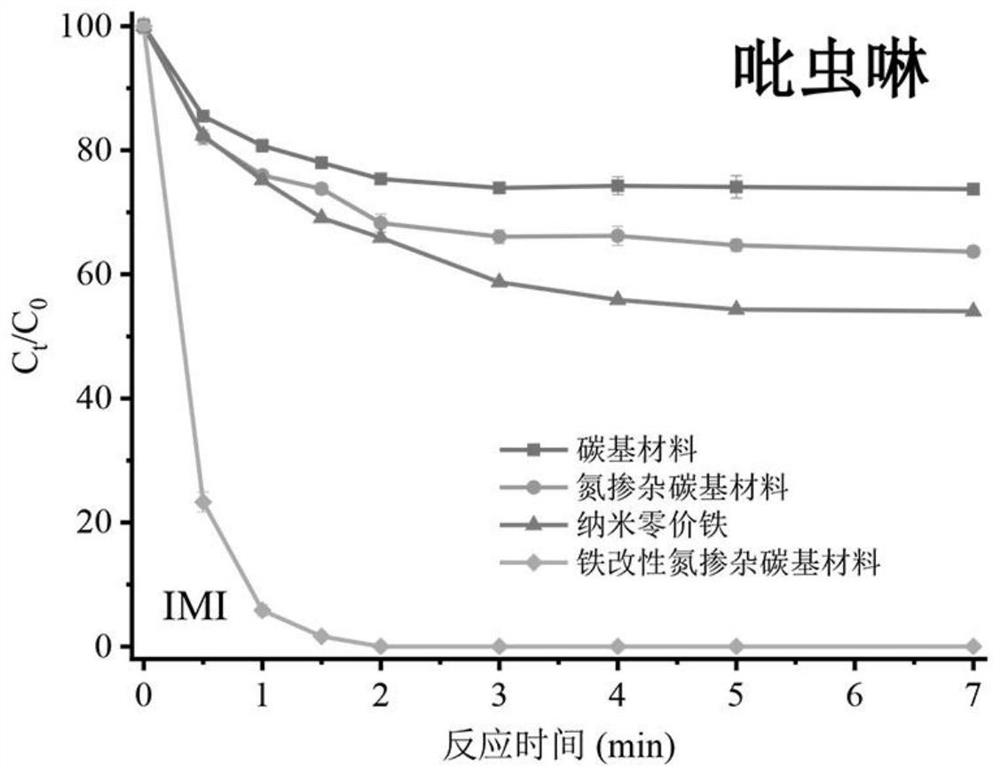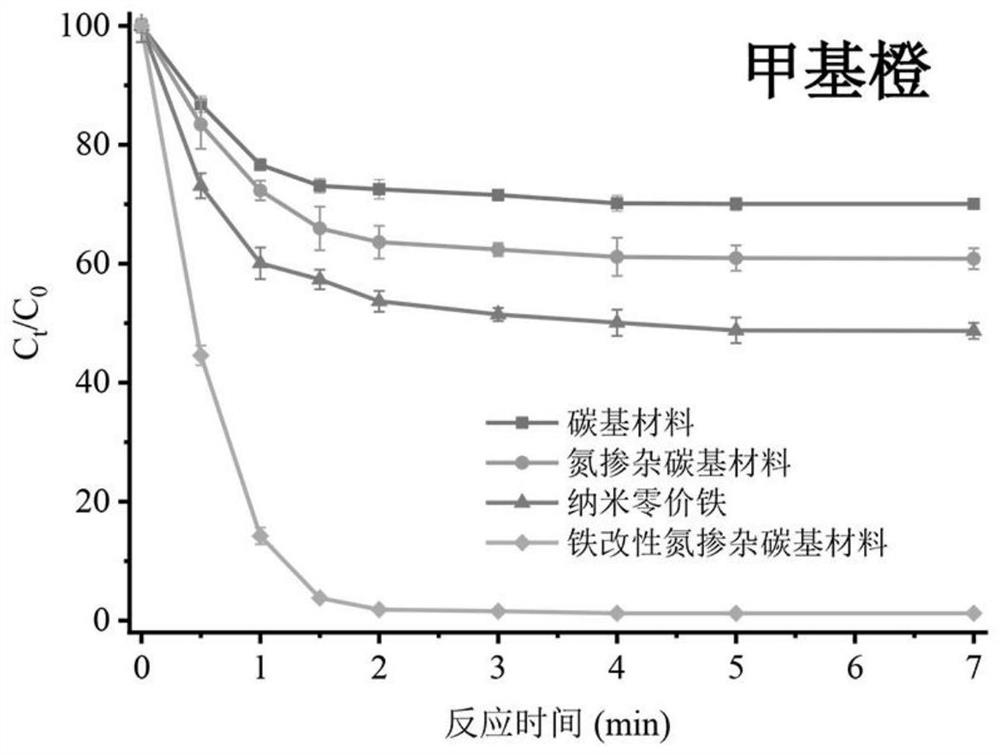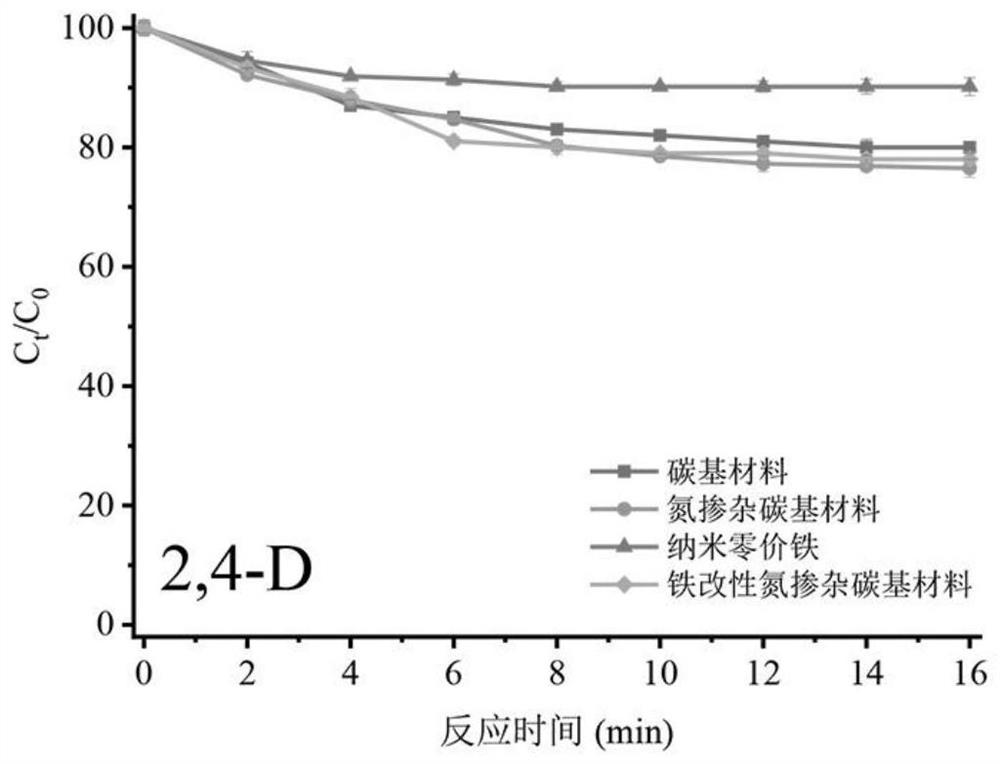Method for degrading dye and pesticide by microwave-induced reinforced iron-modified nitrogen-doped carbon-based material
A nitrogen-doped carbon and carbon-based material technology is applied in the field of environmental organic pollutant restoration, which can solve the problems of weakening microwave athermal effect, reducing microwave energy utilization rate and pollutant degradation rate, etc. Control timely effects
- Summary
- Abstract
- Description
- Claims
- Application Information
AI Technical Summary
Problems solved by technology
Method used
Image
Examples
Embodiment 1
[0038] Step 1: Synthesis of nitrogen-doped carbon-based materials
[0039] Using redox graphene carbon as the carbon-based material, 1 g of the carbon-based material was added to 200 ml of water, and then 1 g of melamine was added to form a mixed solution after 24 hours of adsorption equilibrium. Suction filtered and freeze-dried for later use. The resulting black mixture was transferred to an atmosphere furnace, and heated in a static state at 400° C. with nitrogen for 40 minutes at a heating rate of 5° C. / min. Then, the obtained black powder was washed three times with ethanol and deionized water, then suction-filtered, and freeze-dried for 24 h for further use.
[0040] Step 2: Preparation of iron-modified nitrogen-doped carbon-based materials
[0041] Place 1g / 200mL of the nitrogen-doped carbon-based material suspension prepared above in a three-necked flask, and fill 15g of FeSO 4 ·7H 2 O was added to the suspension and stirred for 12 hours to reach adsorption equilib...
Embodiment 2
[0045]Step 1: Synthesis of nitrogen-doped carbon-based materials
[0046] Using redox graphene carbon as the carbon-based material, add 1 g of the carbon-based material to 200 ml of water, then add 1 g of melamine, and form a mixed solution after 24 hours of adsorption equilibrium. Suction filtered and freeze-dried for later use. The resulting black mixture was transferred to an atmosphere furnace, and heated in a static state at 400° C. with nitrogen for 40 minutes at a heating rate of 5° C. / min. Then, the obtained black powder was washed three times with ethanol and deionized water, then suction-filtered, and freeze-dried for 24 h for further use.
[0047] Step 2: Preparation of iron-modified nitrogen-doped carbon-based materials
[0048] Place 2g / 200mL of the nitrogen-doped carbon-based material suspension prepared above in a three-necked flask, and fill 10g of FeSO 4 ·7H 2 O was added to the suspension and stirred for 12 hours to reach adsorption equilibrium, and 10g / 1...
PUM
 Login to View More
Login to View More Abstract
Description
Claims
Application Information
 Login to View More
Login to View More - R&D
- Intellectual Property
- Life Sciences
- Materials
- Tech Scout
- Unparalleled Data Quality
- Higher Quality Content
- 60% Fewer Hallucinations
Browse by: Latest US Patents, China's latest patents, Technical Efficacy Thesaurus, Application Domain, Technology Topic, Popular Technical Reports.
© 2025 PatSnap. All rights reserved.Legal|Privacy policy|Modern Slavery Act Transparency Statement|Sitemap|About US| Contact US: help@patsnap.com



